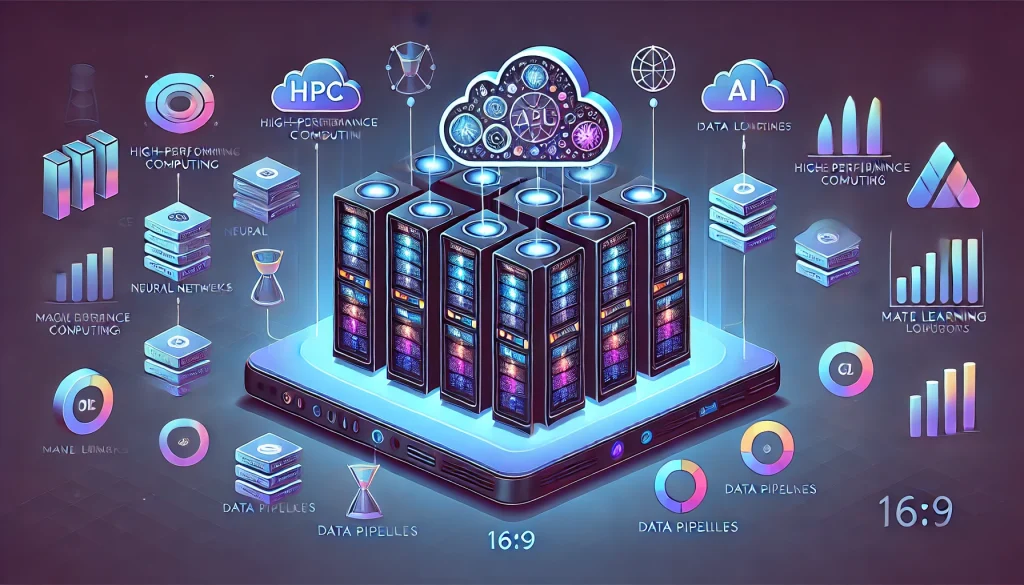Cloud computing is central to how applications are built, deployed, and scaled today. But not all clouds are the same—features, cost, performance, and AI integration can vary greatly. Below, we rank the top 10 cloud providers for modern software development, highlighting what sets each apart, where they excel, and key considerations for devs deciding where to run their workloads.
1. Amazon Web Services (AWS)

Why It’s a Leader
- Market Dominance: AWS remains the most widely used public cloud, offering unmatched service breadth—compute (EC2), containers (ECS, EKS), serverless (Lambda), and more.
- AI & ML Services: SageMaker, Rekognition, Comprehend, and a fast-growing array of specialized ML APIs.
- Ecosystem & Community: With a massive user base, AWS has near-endless tutorials, integrations, and partner solutions.
Best Fit: Large-scale enterprise apps, advanced microservice architectures, global presence needing region-specific hosting. For devs wanting leading-edge AI or managed container pipelines, AWS has you covered.
2. Microsoft Azure
Why It’s Big
- Seamless with Microsoft Stack: Deep integration with .NET, Visual Studio, GitHub Actions, and enterprise Windows environments.
- Hybrid Cloud & Edge: Azure Arc, Stack, and Sphere help unify on-premise and cloud resources.
- AI + Analytics: Cognitive Services (vision, speech, language), Azure Synapse for big data analytics, plus ML pipelines.
Developer Appeal: Those reliant on Windows-based tech or .NET often find Azure’s toolchain convenient. Its integration with GitHub for CI/CD also simplifies workflows.
3. Google Cloud Platform (GCP)
Why It’s Unique
- Kubernetes Roots: Google invented Kubernetes, and GCP’s GKE is often praised for its container orchestration capabilities.
- AI & Data: Vertex AI, BigQuery, and advanced analytics services give GCP a strong edge for data science.
- Developer-Focused: Cloud Run for serverless containers, integrated dev tools, and a user-friendly console.
Use Cases: Big data analytics, ML training with GPUs/TPUs, container-native applications, or teams that want synergy with Google’s open-source leadership around containers.
4. IBM Cloud
Why It’s Still Relevant
- Hybrid & Multicloud: IBM’s roots in enterprise solutions and acquisitions (e.g., Red Hat) let it power mixed environments.
- Watson AI Services: Offers advanced AI/ML APIs for language, speech, and vision tasks.
- Focus on Security: Dedicated hardware security modules and compliance for heavily regulated industries.
Best Fit: Enterprises that lean on mainframes or HPC, wanting to integrate them with modern cloud apps. For devs requiring specialized HPC or data compliance, IBM Cloud can be a robust pick.
5. Oracle Cloud Infrastructure (OCI)
Why It’s Gaining Attention
- Cost & Performance: Oracle claims leading price/performance ratios for HPC or big-data workloads.
- Oracle DB Integration: For devs reliant on Oracle Database or enterprise apps, OCI offers synergy and minimal overhead in migrations.
- AI/ML: Hosted GPU/CPU shapes for training, plus data science platform with collaborative notebooks.
Developer Angle: If you’re deeply invested in Oracle’s ecosystem (databases, business apps), or want HPC performance benchmarks, OCI might be your sweet spot.
6. Alibaba Cloud
Why It’s Popular
- Asian Market Focus: Leading cloud provider in China and Asia-Pacific, strong for cross-border e-commerce or services targeting that region.
- Rich Services: ECS for compute, Container Service for Kubernetes, plus AI services for image/voice recognition.
- Global Data Centers: Slowly expanding outside Asia, giving new international coverage.
Use Cases: Devs needing a strong presence in China or Asia, solutions bridging local user bases, or tapping into Alibaba’s e-commerce ecosystem.
7. DigitalOcean
Why Devs Love It
- Simplicity & Cost Transparency: Known for user-friendly dashboards, predictable pricing—no complex billing.
- One-Click Apps: Market with ready-to-deploy images (WordPress, MEAN stack, etc.) for quick dev experiments.
- Kubernetes & Managed Databases: Great for smaller-scale microservices or dev/test environments.
Key Benefit: Ideal for startups or side projects that want reliability without AWS-like complexity. Good for devs seeking a simpler alternative for small-to-mid-scale apps.
8. Linode (Akamai)
Why It’s Standing Out
- Longtime Developer Favorite: Known for straightforward VPS hosting, recently integrated into Akamai’s edge network.
- Competitive Pricing: No-frills compute, block storage, and load balancers with high performance.
- Growing Services: Docker and Kubernetes support, plus multi-cloud networking via Akamai expansions.
Use Cases: If you want bare-metal-like control or simpler, cost-effective hosting for hobby, startup, or mid-sized production workloads. Great community documentation.
9. Vultr
Why It’s Rising
- Performance-Focused: Offers high-frequency compute plans with fast NVMe storage.
- Global Regions: Over 30 data center locations worldwide to meet low-latency demands.
- Ease of Use: Quick spin-ups for dev sandboxes, plus stable block storage and snapshots.
Developer Hook: If you’re spinning up test environments frequently, Vultr’s UI and API are streamlined—plus they provide DDoS protection, cheap object storage, and a Cloud Firewall.
10. Scaleway
Why It’s Noteworthy
- European Cloud Alternative: For developers needing GDPR compliance or wanting an alternative to US-based hyperscalers.
- Simple Pricing & Services: Offers managed Kubernetes, serverless functions, block storage, plus CPU/GPU instances.
- Sustainability: Emphasizes eco-friendly data centers with low PUE ratings.
Use Cases: Teams seeking European data centers or minimal-latency for EU customers, plus a dev-friendly interface. Also suitable for multi-cloud setups if you prefer smaller providers.
Why Multi-Cloud Is On The Rise
As the cloud space matures, many dev teams adopt multi-cloud or hybrid strategies, picking best-of-breed features from different providers—like AWS for serverless, Azure for .NET synergy, or DigitalOcean for quick staging. Tools like Terraform, Crossplane, or Pulumi can unify deployments across multiple clouds with minimal friction.

AI & Dev Experience: A Key Differentiator
Providers increasingly package AI/ML add-ons:
- AWS with SageMaker or custom ML frameworks.
- GCP focusing on Vertex AI, big data analytics.
- Azure doubling down on integrated GitHub Copilot and built-in ML studio.

Meanwhile, smaller players highlight developer friendliness: quick provisioning, simpler UIs, or free managed databases. For devs building AI-driven apps, these specialized offerings—like HPC GPU nodes, GPU containers, or built-in model hosting—could shape the choice of cloud.
Closing Thoughts
Choosing a cloud provider in 2025 is about more than cost—it’s about AI integration, region availability, developer productivity, or specialized HPC features. AWS, Azure, and GCP remain the dominant trifecta, but up-and-coming providers (DigitalOcean, Linode, Scaleway, Vultr) or enterprise-focused solutions (IBM, Oracle) might better serve niche workloads or cost constraints. Ultimately, the “best cloud” aligns with your stack’s needs, budget, compliance demands, and your dev team’s familiarity.
Key Takeaways:
- Big Three: AWS, Azure, GCP lead in scale, AI services, and global coverage.
- Challengers: DigitalOcean, Linode, Vultr, Scaleway offer simpler or cost-effective solutions, especially for smaller-scale dev or multi-cloud.
- Enterprise Alternatives: IBM and Oracle cater to regulated industries or HPC workflows.
- Multi-Cloud Trend: Devs often combine providers for best-of-breed solutions, with universal IaC tooling bridging the gap.
By staying informed on each provider’s new features—from advanced AI or HPC expansions to better dev tooling—you can ensure your project picks the most suitable environment for success.














